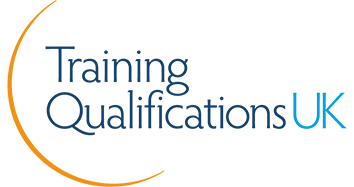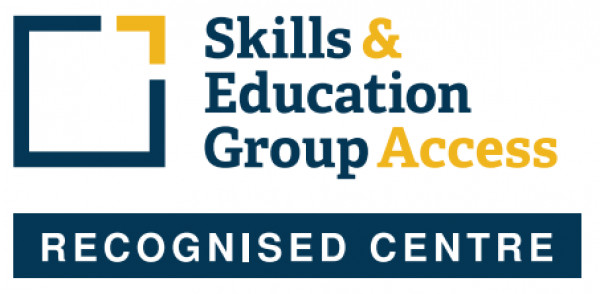Oriental Health Diagnosis
- SALE Savings End Midnight Wednesday 16th April
- SALE Savings End Midnight Wednesday 16th April
Oriental Health Diagnosis
Illness can be diagnosed by identifying whether there is a deficiency, sinking, stagnating or rebellious chi. [Rebellious-chi is any chi that is flowing in the wrong direction]. These are called “Identification of Patterns of Illness”. Chi is an unseen energy, yet it is present in everything. The body contains chi, fluids and flesh, which represent air, sea and land. Their presence, in Chinese philosophical thinking proves that the human body is a micro-universe.
To the Chinese the human body represents the entire universe. This is the reason why they emphasise a need that to live, people need both a balanced and an integrated lifestyle. To the Chinese health and wisdom go hand and hand.
This course aims to teach you how to use Oriental diagnosis for assessing the nature of your client’s condition. You will be taught to identify disease patterns and then how to look at disease diagnosis.
Modules
Introduction
- The Chinese system of medicine has evolved over thousands of years. Their belief is in a holistic approach that treats the whole body and not just the illness. They also believed that there should be no division made between treating the mind and the body.
Identification of patterns according to the eight principles
- Pattern identification and administration of treatment are the main distinctive features of Chinese medicine diagnosis and treatment. ‘Pattern identification’ is the phrase used to include both the gathering of all the symptoms, the examinations used and the application of the patterns that will decide the actual treatment required.
Chi, blood and body fluids identification of patterns
- These patterns describe the interplay between chi, blood and body fluids, and what happens if one or some become stagnant in excess, or are deficient.
Six channel pattern identification of patterns
- The six channels are the principles of pattern identification discussed in the Shang Han Lun. The Shang Han Lun is a monograph that discusses many types of externally contracted diseases. The six-channel pattern identification is a method for the pattern identification of externally contracted diseases.
The four examinations – Asking - Part I
- Asking questions is a very important part of any session involving diagnosis. The most important thing to a patient is to talk about what made them go to see a practitioner in the first place.
The four examinations – Asking - Part II
Diagnosis - Feeling or palpation and pulse diagnosis - Part I
- A practitioner uses feeling or touch as a diagnostic tool to check for any sweat or dryness, to detect any external or internal disharmonies, organ malfunctioning and/or to judge the functions of a meridian. Pulse taking is an important part of Chinese medical theory, and it is taught throughout China
Diagnosis by feeling: Part II - Pulse diagnosis continued
- Pulse diagnosis is one of the most important tools a practitioner has to diagnose what is wrong with their client. The aim is always to bring the meridians, yin and yang, essence and chi back to balance. To do this the practitioner must identify the disharmony and correct it.
Diagnosis by feeling: Part III - Pulse diagnosis continued
Diagnosis by looking
- This lesson is about looking at the body of the patient for clues of disease. No practitioner would ever look at only the part of the body with the complaint, as always they look at the whole person.
Tongue diagnosis
- Through the use of tongue diagnosis a practitioner can see the extent and quality of the exterior flow of energy in the yin organs, and the interior flow of energy in the yang organs.
Diagnosis guide
For a more detailed syllabus on this course, click here
Entry Requirements
There is no experience or previous qualifications required for enrolment on this course. It is available to all students, of all academic backgrounds.
All course fees, inclusive of all payment plans including our Premium Credit Limited option, must be settled before certification can be ordered.
*You will have access to the course for 24 months.

Assessment Method
After each lesson there will be a question paper, which needs to be completed and submitted to your personal tutor for marking. This method of continual assessment ensures that your personal tutor can consistently monitor your progress and provide you with assistance throughout the duration of the course.
Please Note: If you are a student on our Chinese Medical Theory Diploma Course, there is no need to study this course, as these modules are already covered in your course.
On successful completion of your course you will receive the learndirect Certificate of Completion of Training in Oriental Health Diagnosis.
Your course certificate will also state the number of CPD points/hours the course is eligible for.
View a sample of the certificate (opens in new window)
learndirect is one of the largest integrated providers of courses and qualifications, training, and employment services in the UK
- Each year around 6,000 businesses equip their staff for success with learndirect
- learndirect have helped more than 75,000 businesses equip their employees with the skills needed to improve productivity.
- Almost 700,000 maths and English test passes have been achieved with learndirect.
- 300,000 people fulfilled their career ambitions last year with learndirect.
- Over 250,000 apprentices have achieved with learndirect.
- SALE Savings End Midnight Wednesday 16th April
- SALE Savings End Midnight Wednesday 16th April
Oriental Health Diagnosis
Illness can be diagnosed by identifying whether there is a deficiency, sinking, stagnating or rebellious chi. [Rebellious-chi is any chi that is flowing in the wrong direction]. These are called “Identification of Patterns of Illness”. Chi is an unseen energy, yet it is present in everything. The body contains chi, fluids and flesh, which represent air, sea and land. Their presence, in Chinese philosophical thinking proves that the human body is a micro-universe.
To the Chinese the human body represents the entire universe. This is the reason why they emphasise a need that to live, people need both a balanced and an integrated lifestyle. To the Chinese health and wisdom go hand and hand.
This course aims to teach you how to use Oriental diagnosis for assessing the nature of your client’s condition. You will be taught to identify disease patterns and then how to look at disease diagnosis.
Modules
Introduction
- The Chinese system of medicine has evolved over thousands of years. Their belief is in a holistic approach that treats the whole body and not just the illness. They also believed that there should be no division made between treating the mind and the body.
Identification of patterns according to the eight principles
- Pattern identification and administration of treatment are the main distinctive features of Chinese medicine diagnosis and treatment. ‘Pattern identification’ is the phrase used to include both the gathering of all the symptoms, the examinations used and the application of the patterns that will decide the actual treatment required.
Chi, blood and body fluids identification of patterns
- These patterns describe the interplay between chi, blood and body fluids, and what happens if one or some become stagnant in excess, or are deficient.
Six channel pattern identification of patterns
- The six channels are the principles of pattern identification discussed in the Shang Han Lun. The Shang Han Lun is a monograph that discusses many types of externally contracted diseases. The six-channel pattern identification is a method for the pattern identification of externally contracted diseases.
The four examinations – Asking - Part I
- Asking questions is a very important part of any session involving diagnosis. The most important thing to a patient is to talk about what made them go to see a practitioner in the first place.
The four examinations – Asking - Part II
Diagnosis - Feeling or palpation and pulse diagnosis - Part I
- A practitioner uses feeling or touch as a diagnostic tool to check for any sweat or dryness, to detect any external or internal disharmonies, organ malfunctioning and/or to judge the functions of a meridian. Pulse taking is an important part of Chinese medical theory, and it is taught throughout China
Diagnosis by feeling: Part II - Pulse diagnosis continued
- Pulse diagnosis is one of the most important tools a practitioner has to diagnose what is wrong with their client. The aim is always to bring the meridians, yin and yang, essence and chi back to balance. To do this the practitioner must identify the disharmony and correct it.
Diagnosis by feeling: Part III - Pulse diagnosis continued
Diagnosis by looking
- This lesson is about looking at the body of the patient for clues of disease. No practitioner would ever look at only the part of the body with the complaint, as always they look at the whole person.
Tongue diagnosis
- Through the use of tongue diagnosis a practitioner can see the extent and quality of the exterior flow of energy in the yin organs, and the interior flow of energy in the yang organs.
Diagnosis guide
For a more detailed syllabus on this course, click here
Entry Requirements
There is no experience or previous qualifications required for enrolment on this course. It is available to all students, of all academic backgrounds.
All course fees, inclusive of all payment plans including our Premium Credit Limited option, must be settled before certification can be ordered.
*You will have access to the course for 24 months.

Assessment
Assessment Method
After each lesson there will be a question paper, which needs to be completed and submitted to your personal tutor for marking. This method of continual assessment ensures that your personal tutor can consistently monitor your progress and provide you with assistance throughout the duration of the course.
Please Note: If you are a student on our Chinese Medical Theory Diploma Course, there is no need to study this course, as these modules are already covered in your course.
Qualifications
On successful completion of your course you will receive the learndirect Certificate of Completion of Training in Oriental Health Diagnosis.
Your course certificate will also state the number of CPD points/hours the course is eligible for.
View a sample of the certificate (opens in new window)
learndirect is one of the largest integrated providers of courses and qualifications, training, and employment services in the UK
- Each year around 6,000 businesses equip their staff for success with learndirect
- learndirect have helped more than 75,000 businesses equip their employees with the skills needed to improve productivity.
- Almost 700,000 maths and English test passes have been achieved with learndirect.
- 300,000 people fulfilled their career ambitions last year with learndirect.
- Over 250,000 apprentices have achieved with learndirect.
learning
learning hours





















 If you find this course cheaper anywhere
If you find this course cheaper anywhere

